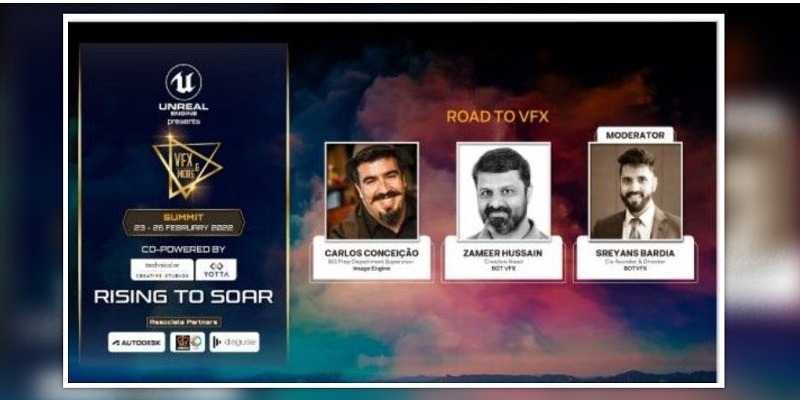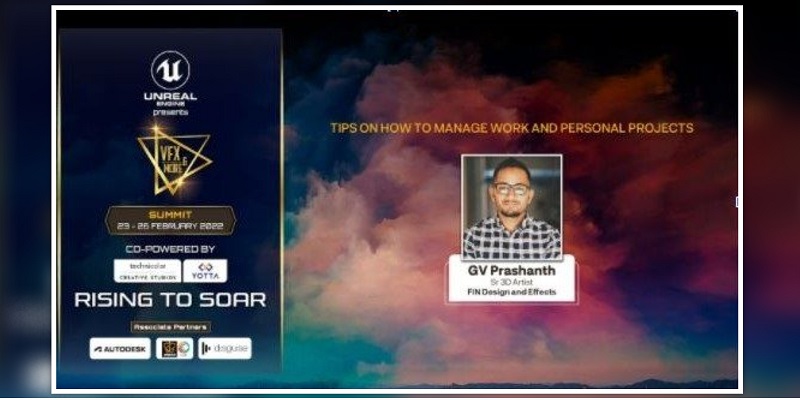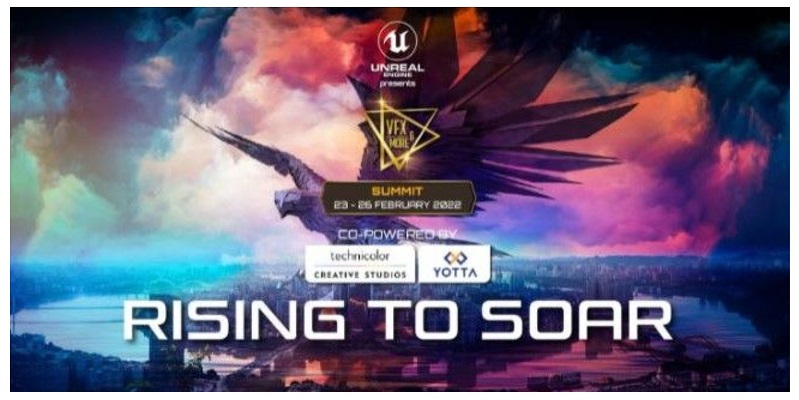The second edition of virtual VFX and More (VAM) Summit organised by Animation Xpress India, witnessed an enlightening discussion titled ‘Road to VFX’, where the key takeaway was that the VFX training schools need to understand the requirements of the industry, train the students to be production-ready and the trainers should be updated with the industry standards. Just giving a general overview of various VFX tools is not enough and they need to master one or two skills.
This discussion mainly tried to understand from the experts how can artists be trained in a manner that will commensurate with the demands of this ever-expanding and vibrant global industry and how can they be equipped with the new-age tech that modern content production is leveraging.
BOT VFX creative head Zameer Hussain and Image Engine BG Prep department supervisor Carlos Conceição shared their insights regarding the scenario in their respective countries. The session was moderated by BOT VFX co-founder Sreyans Bardia.

Bardia pointed out that institutes give focus in giving small snippets in the multiple facets of VFX.
Asked if a generalist role is a much better role for these institutes to teach or follow a specialized approach, Carlos said in a jest, “So a visual effects generalist is also a specialization inside a CG world.” He further mentioned, “When I am teaching someone I give very generic terms of the surrounding and context of visual effects. It doesn’t mean for you to be a compositor, you need to know how to model. You need to know what is modeling but certainly you have to know how to rig.”
According to him, these courses have all the disciplines and each one of them will take a lifetime to master. The learners will have to choose. It is good to have a general idea, but one needs to have a specialization to get a job.
“Being a generalist is the zenith of the career. You can’t start off a career being a generalist,” Zameer said.
He feels that here, in the eastern countries, the training institutes do not give due respect to the development of the skill, it is only given to the application awareness.
“Coming to the East side, I think there is a big gap between what is required in the industry and what is being delivered by the training institutes and what is really needed,” Zameer pointed out.
Both Carlos and Zameer have passion for teaching and they also realized the need to train the freshers who were stepping in the job market and were not production ready. Carlos grew up seeing his mother teaching students and as he started working as a visual effect professional, he naturally felt this intuitive need to help others and eventually ended up training the runners who were serving coffee.
“One of the good things that happened, since I was always on the production and training simultaneously, both were like a parallel path all my career. That gave me an insight into what were the missing links that we have in our existing system and how we can get better at fixing those gaps,” Zameer said.
Talking about the hiring experience of many years, Zameer said, “Our success rate has been better when the students are recruited from the Arts colleges, people who have the skill in them. All they need is exposure to the tool world and the application world. The success rate has been way better than a button-pusher who comes from a training college.”
Both Carlos and Zameer agreed that for a studio ‘picking the right people’ is also a skill. As a solution for this, Zameer highlights the need of benchmarking. One benchmarking can be of the institutions with some certification saying that the content they are teaching are in line with the industry requirements. Second is the trainers who are teaching there.
“You need to have a better methodology to train the trainers who are teaching in the colleges,” Zameer said.
The panelist highlighted the need of internships for both, the studios and training institutes, to be in tandem with each other. Studios do have their internal training but the businesses are entirely different. Hence, the onus of ensuring that the freshers are skilled enough to contribute lies with the institutes as well as the studios.
Regarding the understanding from a student’s perspective who find it difficult to figure out if being self-taught would help them to get a job learning from certain institutes, Zameer pointed out that it is the onus of the studios to have to screen the students on their own, without any bias if they are coming from a branded training college or they are self taught.
Talking about the training institutes focusing on pipelines, Carlos said that pipelines are not a problem. One needs to be good at what they do. Pipeline is all about how you communicate with the next department.
We need the students to be taught more tools that are being used in different companies, he said.
Bardia pointed out that VFX is a beautiful confluence of art and technology, while everyone focuses on the art side and not really on the technology.
In this context Carlos pointed out, “I studied to be a software engineer, I realized that I don’t want to do this. People were like; you will never be an artist. The problem is that, there is this concept that if you come from an Arts background, you will be a step ahead, but this is not the case. I am an engineer and I know how to troubleshoot. Before you can explore your creativity you need to learn the concepts.”
As a piece of advice to the students, Carlos highlighted the importance of asking questions, being curious and striving hard to find solutions. On the other hand he believes that trainers should be able to do some shots and be relevant.
“We put a lot of research for our traditional educational systems. We should give equal focus while choosing the vocational courses,” Zameer said.
In another interesting presentation at VAM Summit 2022, FIN Design and Effects Senior 3D Artist GV Prashanth, residing in Australia (originally from India) pointed out the importance of mastering personal art to be relevant.

“I never stuck to my college curriculum. I always went home and did my own thing. I always wanted to be more than a lighting artist,” Prashanth said.
He revealed that when he started off almost ten years ago, every day he did a couple of artworks, tried his hands at different software and sent his work to 30-40 different companies. He also keeps on doing a lot of research work. He made a character, a smoking old man which was hard to do back then which went on to win him an award.
“When it comes to lightning, I really like to challenge myself. I did a particular image within 48 hours. I have done such weekend projects, where I do the lighting and shading,” he said.
“I spent a lot of time when it came to crafting my oil painting craft. I take my Tab, draw and finish it by the end of the day. In 2021, I started venturing into Houdini,” Prashanth said.
Talking about balancing personal and professional life, Prashanth mentioned, “Balancing is a constant challenge. You have to be disciplined. I like to keep a routine. Also, I use my travel time to keep working on my personal goals.”

